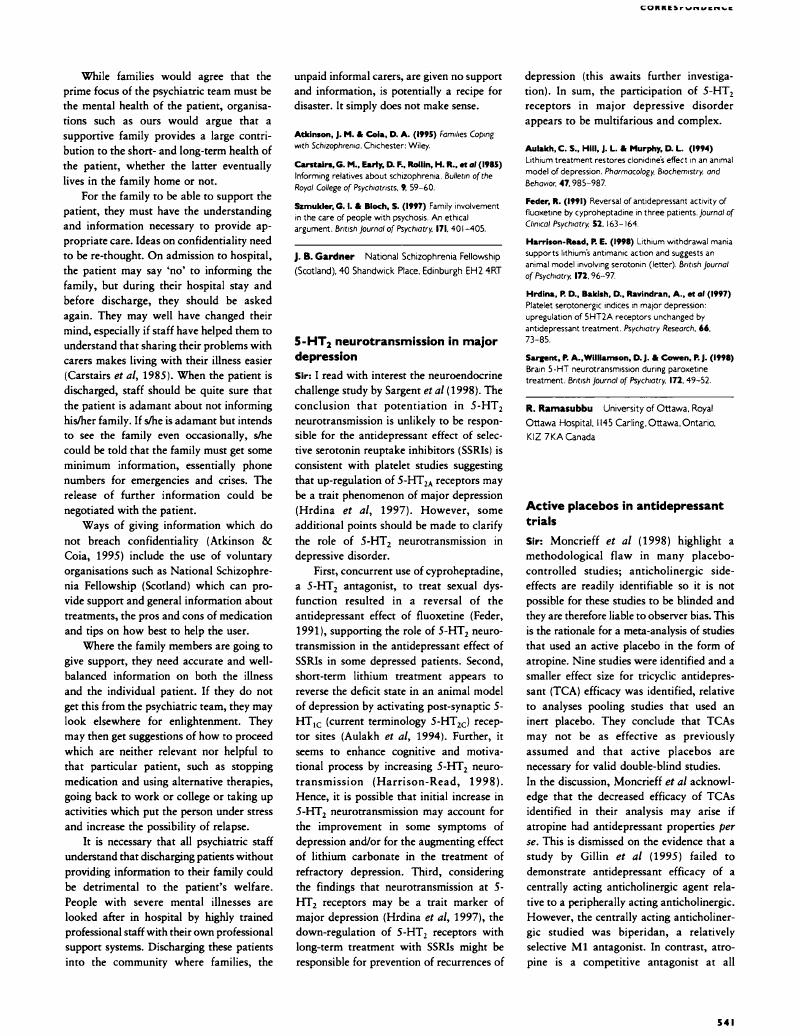No CrossRef data available.
Article contents
5-HT2 neurotransmission in major depression
Published online by Cambridge University Press: 03 January 2018
Abstract
An abstract is not available for this content so a preview has been provided. As you have access to this content, a full PDF is available via the ‘Save PDF’ action button.

- Type
- Columns
- Information
- Copyright
- Copyright © 1998 The Royal College of Psychiatrists
References
Aulakh, C. S.
Hill, J. L. & Murphy, D. L. (1994) Lithium treatment restores Clonidines effect in an animal model of depression. Pharmacology, Biochemistry and Behavior, 47, 985–987.Google Scholar
Feder, R. (1991) Reversal of antidepressant activity of fluoxetine by cyproheptadine in three patients. Journal of Clinical Psychiatry, 52, 163–164.Google Scholar
Harrison-Read, P. E. (1998) Lithium withdrawal mania supports lithium's antimanic action and suggests an animal model involving serotonin (letter). British Journal of Psychiatry, 172, 96–97.CrossRefGoogle Scholar
Hrdina, P. D.
Bakish, D.
Ravindran, A.
et al (1997) Platelet serotonergic indices in major depression: upregulation of 5HT2A receptors unchanged by antidepressant treatment. Psychiatry Research, 66, 73–85.CrossRefGoogle ScholarPubMed
Sargent, P. A.
Williamson, D. J. & Cowen, P. J. (1998) Brain 5-HT neurotransmission during paroxetine treatment. British Journal of Psychiatry, 172, 49–52.Google Scholar





eLetters
No eLetters have been published for this article.